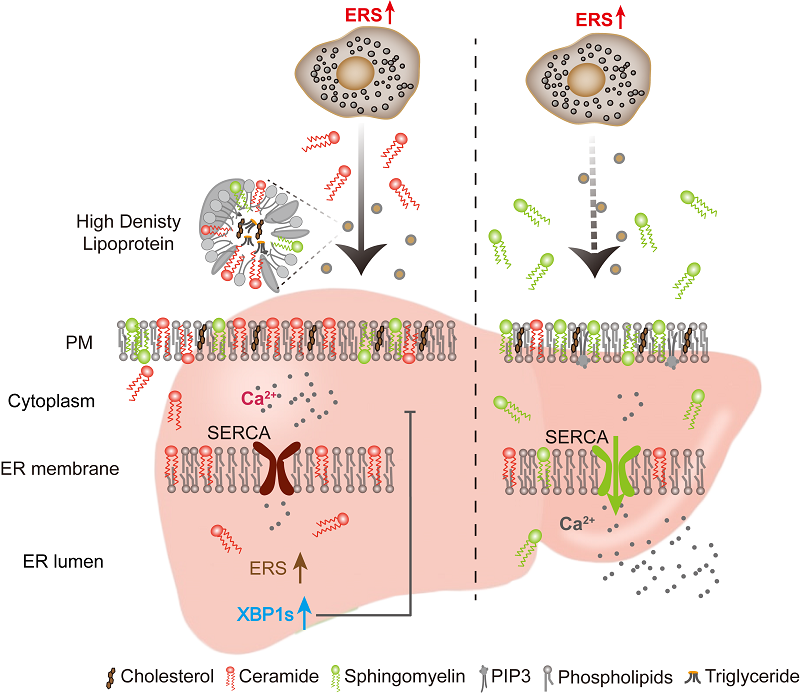2025-04-01 中国科学院(CAS)
 Proposed model showing adipocytes underling ERS secrete ASM to generate ceramide which is transported via HDL. This process reduces membrane fluidity, impairs SERCA activity, disrupts calcium homeostasis, and thereby activates the UPR. (Image by HUO Yazhen)
Proposed model showing adipocytes underling ERS secrete ASM to generate ceramide which is transported via HDL. This process reduces membrane fluidity, impairs SERCA activity, disrupts calcium homeostasis, and thereby activates the UPR. (Image by HUO Yazhen)
<関連情報>
- https://english.cas.cn/newsroom/research_news/life/202503/t20250331_908981.shtml
- https://rupress.org/jcb/article-abstract/224/5/e202405060/277346/Ceramide-mediates-cell-to-cell-ER-stress?redirectedFrom=fulltext
セラミドは膜流動性を調節することによって小胞体ストレスの細胞間伝達を媒介する
Ceramide mediates cell-to-cell ER stress transmission by modulating membrane fluidity
Yazhen Huo,Xinlu Liu,Chen Lu,Tao Li,Zaili Yang,Fenfen Xu,Si Chen,Kailin Yin,Likun Wang
Journal of Cell Biology Published:March 26 2025
DOI:https://doi.org/10.1083/jcb.202405060
Under endoplasmic reticulum (ER) stress (ERS), cells initiate the unfolded protein response (UPR) to maintain ER homeostasis. Recent studies revealed ERS transmission between cells and tissues, by activating the cell-nonautonomous UPR in cells that do not experience ERS directly. Here, we report that ERS triggers a rapid release of ceramide independent of the UPR, but requiring the acid sphingomyelinase activity. Carried by lipoproteins, ceramide is delivered to receiving cells to induce the UPR and regulate cell functions at multiple aspects, including lipid accumulation, cell death, and cytokine production. Mechanistically, extracellular ceramide stimulates ceramide synthesis at the transcription level in receiving cells, leading to ceramide accumulation in the ER so as to reduce membrane fluidity to disrupt ER calcium homeostasis, thus activating the UPR. Sphingomyelin counterbalanced the effect of ceramide. UPR induction is the frontline response to protect cells from ceramide insult. Our study suggests ceramide-mediated ERS transmission as a universal cell–cell communication model regulating a wide range of physiological events.


